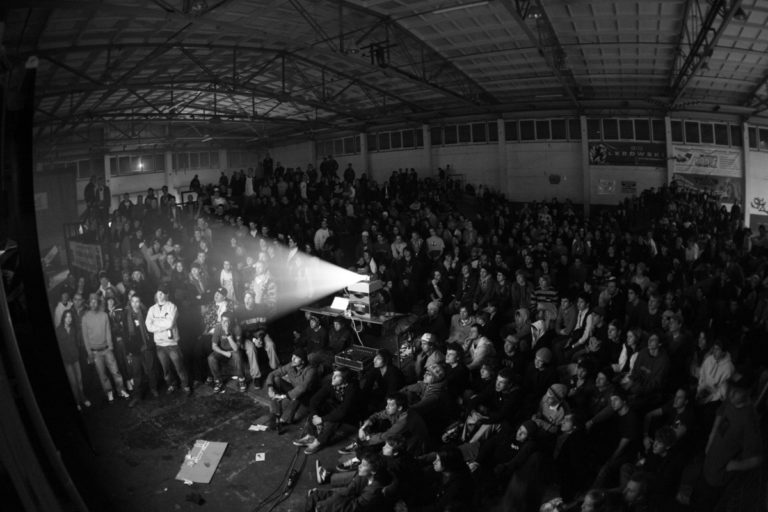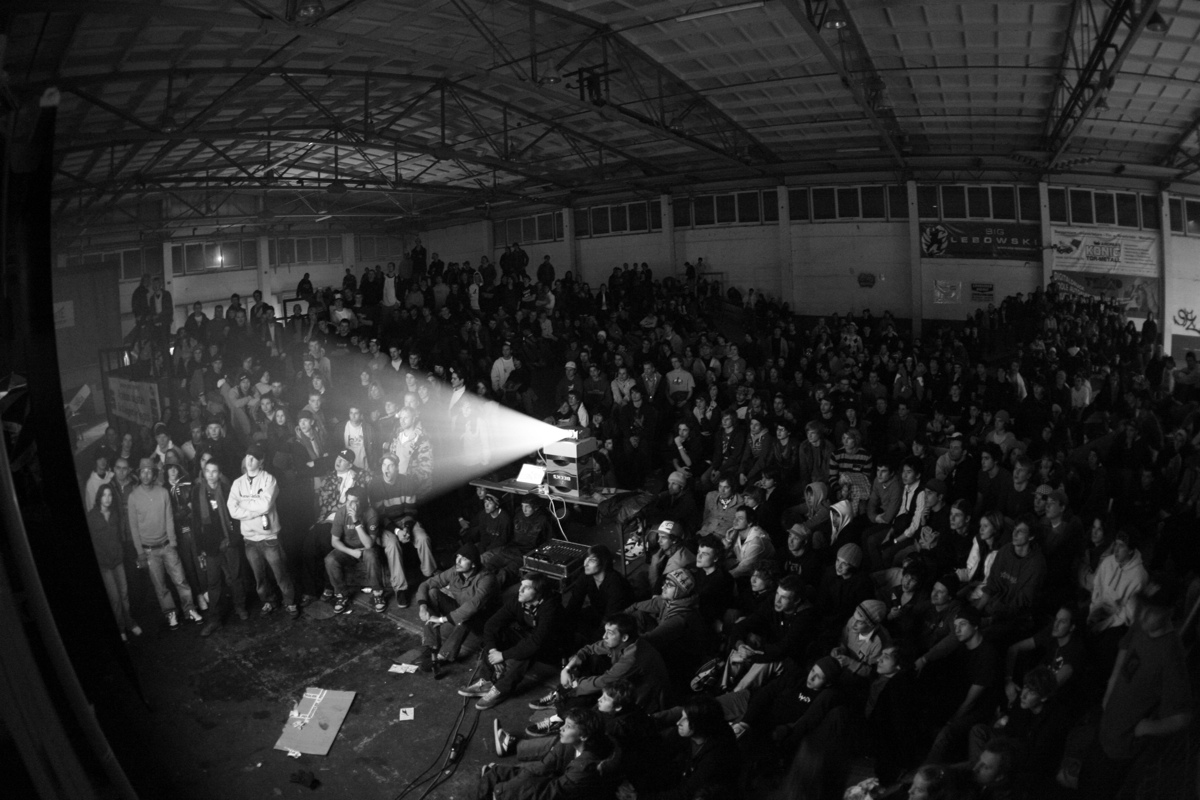On the high end of my estimates, there may be as many as 20,000 to 25,000 “aggressive” rollerbladers in the world right now. On the low end, there may be as few of 15,000 of us.
I’m telling you this now because I actually loath the kinds of articles that wait until the very last second to do some sort of “big reveal” way down at the bottom of a long and complicated article. So I’m extending you that courtesy straight away.
But, these are actually fairly complicated numbers, and I’d really appreciate it if you’ll take a few minutes to consider how I’ve come to believe in these numbers. Also, things may get a bit “mathy” for a while, so please bear with me here.
If you’ve been following my last couple of articles, you’ll be aware that my motivation for pursuing this project has to do with a thing called “language death” that has been well explored in the field of linguistics. For linguists, a language that has fewer than 100,000 native speakers is usually on its way to the grave.
Now, I need to give a quick aside here before we get into it. So here’s the thing, as a linguist, I know very well that “Rollerblading”—strictly speaking—isn’t in itself a proper “language” like German, Latin, Croatian, or Swahili. However, there are several key features of rollerblading discourse (including several nearly global “universals”, novel preposition usage, a wide array of technical jargon) that makes it appropriate—at least for the sake of brevity—to treat rollerblading discourse AS IF IT WERE a language. I know I’ve been a little bit “fast and loose” using the term “language” that way, but I promise I’ll take up the issue at length at a later date.
Right, on we go.
So in Part 1 of this series, I sketched a working definition of what and who a rollerblader is, not in absolute terms, but in terms I thought reasonable to begin a kind of census project for estimating our total global population. As I said before, that definition isn’t meant to be used to tell any individual once-and-for-all that he or she IS or IS NOT a rollerblader, but I do require some means to cull the herd from the large number of participants rollerblading had two decades ago to the considerably smaller number that survives today.
That definition included three standards, which were the following:
A rollerblader is a person who inline skates who additionally:
1. Does tricks (of any kind) on rollerblades, and
2. Knows the “language,” jargon, and conventions of “aggressive” rollerblading discourse, (soul grind, royal, acid soul, true fish, steez, the “slap-bump”, etc.), and
3. Participates in some meaningful way with the rollerblading community on an active or at least semi-regular basis.
This three-fold definition is meant to narrow a large number of people—one stage at a time—to a smaller number who we all would tend agree is an “aggressive” skater like you and me.
So, armed with that functional definition, I set out to get estimates from about a dozen or so rollerblading scenes in major US cities. The method I used goes as follows:
1. Get in touch with a scene “leader”, “tribe elder,” or someone familiar enough with his or her scene to speak to its local population.
2. Share with them my definition and ask them to report how many rollerbladers there are in that given area that fit the criteria.
3. Use published, professional census estimates of that area and compare it to the number of rollerbladers the tribe elder reported living and skating in that area and reduce the number down to a figure I’m calling “Bladers Per Million” or BPM.
Here’s the median example of what that looks like:
I have, from reliable sources that the city of Austin, Texas (USA) and its greater surrounding metropolitan area has 51 rollerbladers who satisfy all three strictures of the definition I mentioned above. The greater metropolitan area surrounding Austin has about 1.25 million inhabitants.
So:
1,250,000 / 51 = 24.5 Bladers Per Million, or—rounding up—25 BPM.
Now, there are a number of reasons to use this method to estimate the rollerblading population.
First, using professional census data cuts down on the margin of error. Since estimates of rollerbladers in a given area tend to be a little fuzzy, using an accurate figure to compare it to provides a more reasonable BPM number. Second, asking a scene leader or “tribe elder” is a good way to get an accurate number, because I’m only asking people to report figures that are relatively well-known to them. Third, using the BPM number provides a good means of comparison to other scenes, without a great deal of controversy. Anyone can use this model to see whether your scene is bigger or smaller than a median scene as scaled by the BPM model.
For example, this model suggests that Austin has a medium sized rollerblading scene with a BPM of 25. Other, larger cities sometimes have a proportionally larger BPM. Chicago and San Diego, as examples, have BPMs in the low to mid 30s. However, other smaller cities without much of a rollerblading scene may be proportionately smaller. Simultaneously, other small towns may have a disproportionately heathly scene may have more BPM than other cities of a similar size, and so on.
Another advantage of using the BPM model is that it provides very small numbers that can be checked against tiny scenes where the BPM is in the single digits and known precisely.
For example, using the median BPM of 25, the BPM model predicts that a city like Kamloops, British Columbia—with a population of 87,678—ought to have about 2 or 3 rollerbladers. When I asked Joey McGarry how many bladers there were in his home scene, he reported that other than himself and Todd McInerney, there were maybe one or two other dudes who skate occasionally or even seasonally, but don’t necessarily interact with the larger rollerblading community with any sort of regularity.
So comparing the median number for BPM in large places with relatively large or healthy scenes against tiny locations or scenes with almost crystal clear accuracy (i.e., there aren’t two dozen bladers in Kamloops that Joey and Todd don’t know about) provides a reasonable safe-guard against wildly inaccurate estimates.
The same procedure was done with several other small US cities, giving me good reason to believe that 25 BPM, while probably a tad high, is still a good median estimate to use for further extrapolation.
The other main reason to hone out a number like 25 BPM is that it lets us make reasonably educated guesses and predictions for other rollerblading scenes in the rest of the US, North America, or even the world.
So if we look at the total population of the United States (319,000,000) we can simply multiply our median BPM (25) by the number of million people in the US (319) and get the modest estimate of 7,973 rollerbladers who fit our definition of a rollerblader skating in the USA right now.
Similarly, if we use that same median BPM to estimate the number of rollerbladers in the European Union (population 503,000,000), we get a total number of 12,575.
Based on that estimate, we can predict that the European scene (strictly EU) is probably about 1.5 times as large as the total American scene. Meanwhile, an individual European country like Germany (with a population of about 80,000,000) probably has around 2,000 actual rollerbladers who fit our definition. Likewise, a European city the size of Munich probably has about 34 or so rollerbladers who fit our definition, while a city the size of London may have as many as 200.
Now, the way I estimated the numbers I gave you there at the beginning of this article were pretty simple math. There are 1.2 billion people (1,200,000,000) in the world who live in industrialized countries. Taking the median BPM figure of 25 and multiplying that by 1,2000 gives us a number of around 30,000 total rollerbladers in the world. However, basing a global estimate on figures solely from major US cites (I believe) artificially inflates the total number because other industrialized nations in the world may not have scenes that are accurately reflected by US-based BPM estimates.
The worldwide median for BPM is probably much lower than 25, so for my high estimate I used a BPM figure of 20. For the low-end estimate, I used a BPM of 13.
Now, there are many and obvious potential problems with using this model, and many of the people I spoke to actually believe that the total number of rollerbladers is much, much smaller than my model predicts. Some people, using online social media as a means to make their estimates, believe that the total population of US rollerbladers is probably closer to 2,500 total. Other people I spoke to used their intuitive sense of the size of the rollerblading economy to inform their estimates. Both rely entirely on intuition and there is obviously no easy way to verify those kinds of estimates. More about this shortly.
Another interesting critique I got came from a rollerblader in a major US city who believed that using total population to calculate BPM was misguided. He suggested that instead of using the total US population, I should only consider “urban” population data on the basis that no one in rural America would actually fit my definition of a rollerblader (or at least, too few of them would satisfy my definition to bother inflating the BPM by a population factor of nearly 61 million. So if I were to calculate a US estimate that excludes our rural population, I would take 81% of the total US population (because that’s how many Americans live in urban areas) and multiply THAT number by my 25 BPM figure, which gives us an estimated 6,460 rollerbladers in the US (compared to the nearly 8,000 bladers the total population figure would suggest).
Personally, my intuition tells me that the number of rollerbladers (both in the US and in the world) is probably much lower than my data suggests. However, one of the main purposes of this project is specifically to avoid intuition and to try instead to get some hard data to look at.
And, frankly, that’s one of the best outcomes this project can hope for. The model I have created is available directly to you, my dear reader, because my hope here isn’t to tell everybody what I believe, but rather to provide a baseline that we might all use to try to get at a more accurate estimate. I’m not wedded to these numbers in any way, and if, after more people encounter this idea a better one emerges, I’ll be quite happy to adopt it. Similarly, if it turns out that a US-based median BPM figure of 25 is wildly inaccurate, we can easily recalculate if we have better information to go on.
In fact, you, yourself can contribute to this project by taking a look at how many active rollerbladers there are in your area and comparing it to the general population of that same area. If it’s wildly different from 25 or so BPM, I imagine the rest of the rollerblading community—myself included—would like to hear about it.
This is how you calculate your local BPM:
Take the number of rollerbladers in your area (N) who fit our definition, multiply that by a million, and then divide that number by the population (P) of your town, city, or area.
In math terms, that will loook like this:
N x 1,000,000 / P =_____________ BPM
If your BPM is higher than 25, you probably live in a healthy rollerblading scene. If it’s much smaller than 25, your scene may be on the rocks.
As a final thought, let me leave you with the following.
I’ve been working on this project in a very on-and-off way for about four years now. In that time I’ve spoken to many people from many different places in the world and, generally, the impression that I have is that most people believe that there are more rollerbladers in countries other than their own. For example, most Americans I’ve spoken with seem to think that Europe has a healthier blading scene than we do. Meanwhile, most Europeans I’ve spoken to believe that the US has it better. Simultaneously, nearly everyone I’ve spoken to has placed a great deal of hope in the idea that South American countries and Asian countries have the potential to host a resurrection level of either bladers or potential bladers. Frankly, I’m not totally sure where this hope comes from, but if this series is received well enough by all of you, I will be willing to launch a full scale investigation into the potential rollerblading populations of those two continents. Personally, I’m skeptical that any huge and unknown population of rollerbladers lives in China or in the rural hills of Argentina, but I’ve certainly been wrong once or twice in the past.
As always, thanks for your consideration.
– Frank Stoner
Your favorite pros’ favorite products. Support Be-Mag by buying at our very own

or one of the following affiliate partners:
Amazon – everything you need
B&H – cameras and more
eBay – Electronics, Cars, Fashion, Collectibles, Coupons and more






